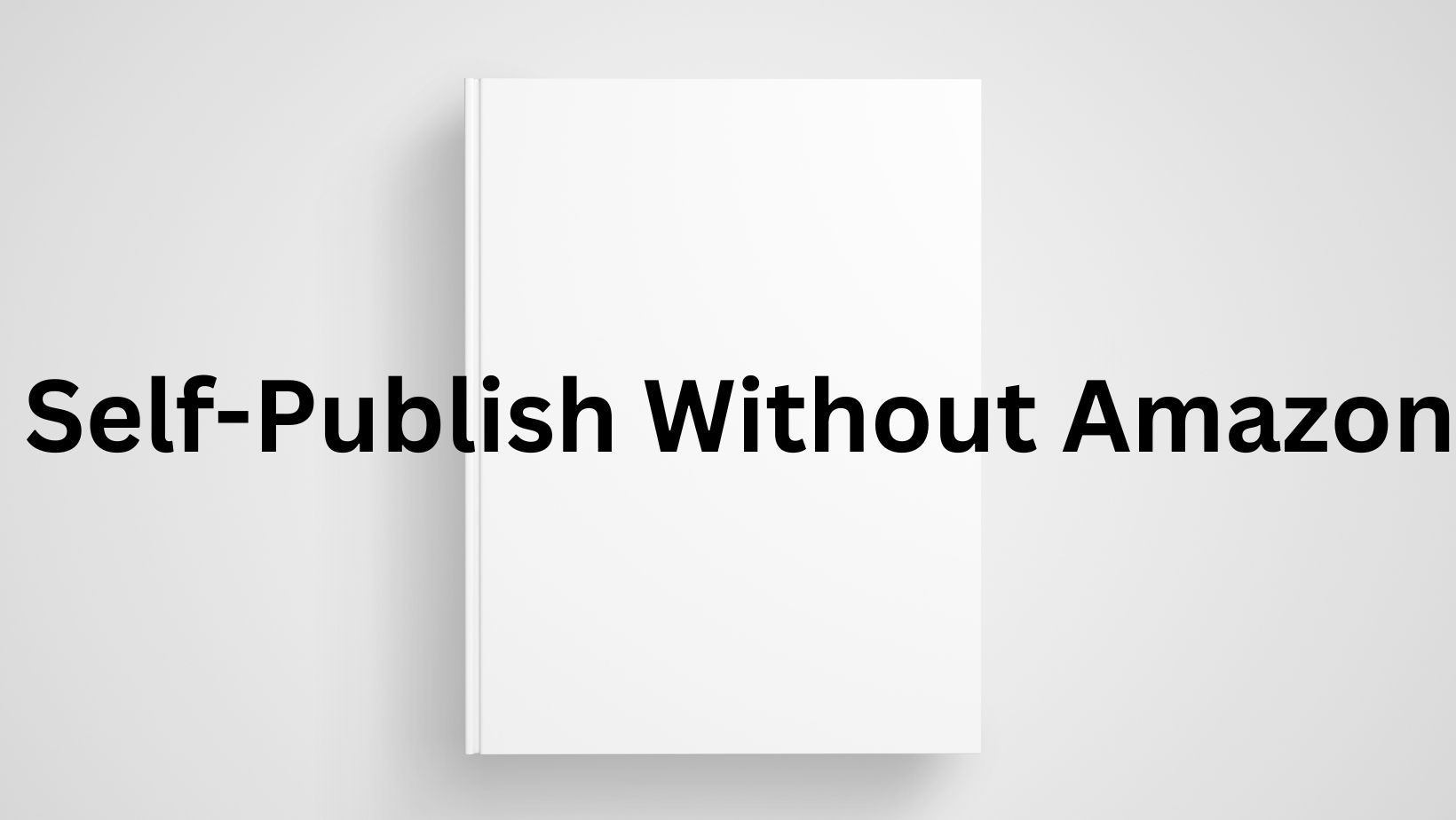When it comes to self-publishing, many aspiring authors believe that Amazon is their only viable option. With its enormous customer base, comprehensive publishing tools, and familiar interface, it’s no wonder that Amazon KDP has become a primary destination for indie authors. But does self-publishing Self-Publish Without Amazon is possible?
The answer is an emphatic “no.” A host of other self-publishing platforms exist outside the Amazon ecosystem, offering diverse opportunities for authors to get their works into readers’ hands. However, with the Kindle Book Store’s overwhelming size, it has become increasingly challenging to attract attention to new books.
In fact, within the time it takes to read this article, ten new ebooks will likely be published through Amazon KDP (Kindle Direct Publishing). Given the massive number of books available on Amazon—estimated to be over 9 million and growing rapidly—smaller niche books often get lost in the shuffle. So, is there a better approach?
Table of Contents
Choosing to Self-Publish Without Amazon KDP

Certain types of books have a limited potential readership, primarily local audiences or those interested in specific subjects related to certain regions or countries. Examples include books on local history, country-specific sports, biographies, and memoirs centered around a particular area. In these cases, focusing on Self-Publish Without Amazon can be a feasible decision that aligns with the target market and maximizes book marketing efforts.
Choosing to Self-Publish Without Amazon might stem from several reasons:
Audience Reach: Some readers favor other platforms or specific formats not supported by Amazon. By considering alternative platforms, authors can tap into these customer bases.
Price Control: Certain platforms offer greater flexibility in pricing, including the ability to offer promotional pricing or free copies, giving authors more control over their marketing strategies.
Rights Retention: While Amazon KDP doesn’t demand exclusive rights, certain promotional advantages (such as enrollment in Kindle Unlimited) are exclusive to authors who agree to sell their eBook only on Amazon. Authors preferring broader distribution may choose other platforms.
Royalty Rates: Some platforms can offer higher royalty rates than Amazon, particularly for books priced outside of Amazon’s preferred pricing range.
Fortunately, there are numerous alternatives for Self-Publish Without Amazon.
Here are a few options worth considering:
Several platforms offer viable alternatives to Amazon KDP, each with unique features that can align with different author goals.
Blurb:
Blurb offers an economical alternative for self-publishing paperbacks. With the ability to publish in multiple languages, authors can sell their books locally and through the Blurb bookstore, both in print and ebook formats.
Blurb has emerged as a platform that caters to the unique needs of independent authors and creators. Offering an intriguing blend of flexibility, creative freedom, and direct marketing, Blurb redefines what it means to Self-Publish Without Amazon.
By offering a platform that facilitates creative control, diverse formats, and direct-to-consumer sales, it caters to the needs of a broad array of authors and creators. Whether you’re an author, a photographer, a cook compiling your recipes, or an entrepreneur crafting a brand story, Blurb could be the self-publishing platform that helps you bring your vision to life.
Lulu:
As a pioneering self-publishing platform, Lulu provides various options for book formats, including standard US trade paperbacks and hardcovers. The quality of print-on-demand books has significantly improved, approaching that of traditional offset-printed books.
Lulu, recognized for its excellent Print-On-Demand (POD) services and an inclusive suite of tools for creating, publishing, and distributing both print and eBooks. This can be particularly beneficial for authors who wish to offer physical copies of their books without incurring substantial upfront costs.
Bookbaby:
Bookbaby offers self-publishing packages tailored to individual needs. While precise pricing per copy varies and can be obtained by contacting them, the service has received positive reviews for its value and range of services.
BookBaby’s service offerings cover every aspect of the publishing journey. These include professional editing, book cover design, eBook conversion, and book formatting services. But it doesn’t stop at the creation phase; BookBaby also provides global eBook and Print-On-Demand (POD) distribution, allowing authors to reach readers across multiple platforms without the need for multiple contracts or complex negotiations.
Inkitt:
If publishing for fun is the primary goal, Inkitt provides an option to reach a global audience. With around seven million active users, authors can share their stories and participate in writing contests while retaining the freedom to publish on other platforms.
Inkitt stands out by offering more than just a self-publishing platform—it’s a reader-centric community where authors can post their work and receive immediate feedback. By offering free access to books and stories, Inkitt encourages interaction between authors and readers, fostering a dynamic environment of critique and collaboration.
Smashwords
Smashwords stand as a strong contender, presenting authors with a global distribution network that goes beyond Amazon’s reach. Authors retain considerable control over their pricing strategy and can even offer books for free, a feature not typically available on Amazon KDP.
Notably, it allows authors to set their own price, including the option to offer their books for free—an opportunity not provided by Amazon KDP.
Draft2Digital
Draft2Digital’s mission is to provide independent authors with a streamlined, automated process to publish their work, allowing them to focus on what they do best: writing. On the other hand, excels with automated services, from formatting to metadata management, taking much of the administrative burden off the author’s shoulders. Plus, it provides access to a broad network of online bookstores.
With its robust set of tools and services, Draft2Digital enables authors to navigate the publishing process with ease and reach a wide audience, allowing them to concentrate on their craft and the stories they wish to tell.
Direct Ebook publishing and sales
For authors who prefer digital publishing, creating ebooks in popular formats like mobi (Kindle), epub, and PDF is relatively straightforward using tools like Caliber. Selling these ebooks directly from personal websites or blogs, along with integrating online payment services, eliminates the need for time-consuming tax declarations associated with platforms like Amazon.
Promoting a Local Book
Local newspapers, radio, television, libraries, bookstores, markets, reading groups, and community events offer opportunities to get the book in front of interested readers. Unlike the vast sea of books on Amazon, local promotion allows for more targeted marketing and direct engagement with potential buyers.
Book Promoting Strategies

Local newspapers, La Côte. Serve as an excellent avenue for book promotion. My local newspaper strongly supports emerging writers and frequently features stories about new authors and book reviews. Consider reaching out to local radio stations or television channels as well. Numerous opportunities exist to promote and sell your book in the local community. Set up a small stall at a local market to engage potential readers. Establish connections with your local library and bookstores.
Reach out to local reading groups and offer them insights into your book. Inquire with stores and cafés if they would be open to displaying and selling your book. Contact clubs, associations, or your chamber of commerce to expand your book’s reach. Check if there are any local book fairs where you can participate.
Explore the possibility of speaking at local events to engage with a live audience. Promoting your book locally provides significant potential for sales. You can easily capture people’s attention and interest when you focus on local promotion, unlike the challenges of online promotion. This traditional approach to Self-Publish Without Amazon still proves effective, as opposed to getting lost in the vast crowd of books on Amazon.
Summary
Amazon KDP undeniably offers tremendous benefits to authors seeking to self-publish. However, it isn’t the only option. By exploring other platforms, authors can take advantage of unique features that may better align with their publishing goals, potentially reaching more readers and maximizing their earnings. The key to successful Self-Publish Without Amazon lies in understanding your goals, researching available platforms, and making an informed choice that suits your unique needs.
Whether that’s Amazon KDP or another platform, the most important step is the decision to share your creativity with the world. While it’s true that most new authors choose to self-publish on Amazon for its convenience, quick availability, and global reach, it may not be suitable for every author, particularly those residing outside the US or UK. Registering with the IRS to prevent the loss of 30% of your royalties in withholding tax is one significant hurdle to overcome.
If your book primarily caters to a local audience and lacks international appeal, investing time and effort on Amazon may not yield the desired results. Choosing the right self-publishing platform is a critical decision, one that should be made after thorough research and consideration of your personal objectives as an author. Whether your journey leads you down the path of Amazon KDP or towards another platform, remember that each step taken is a testament to your courage and dedication as an author to Self-Publish Without Amazon.

